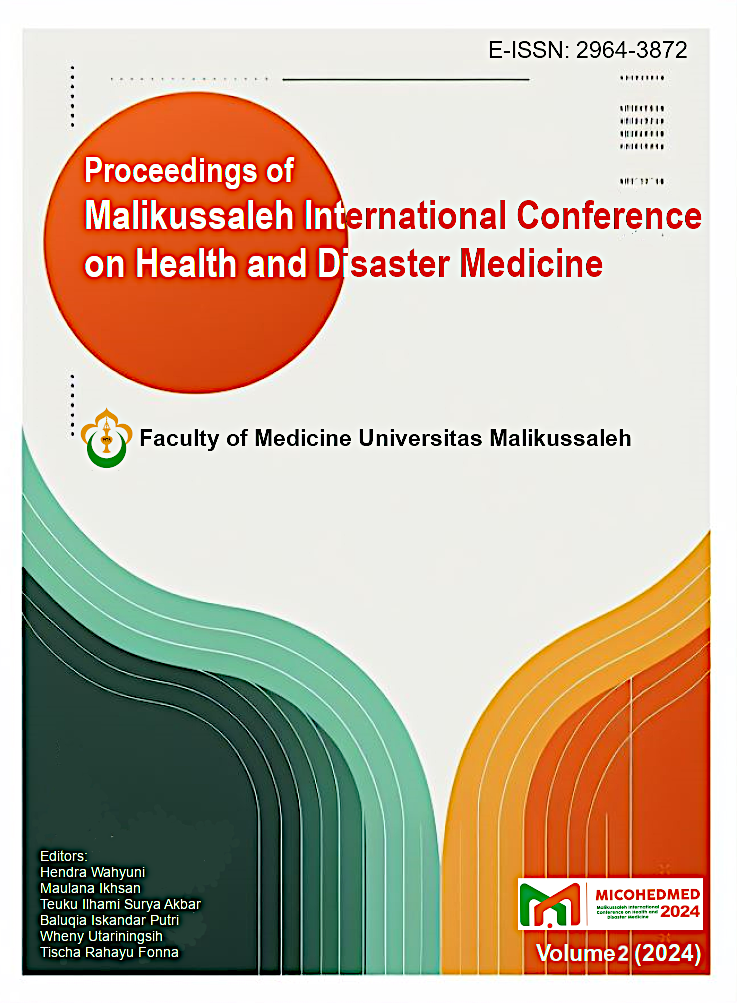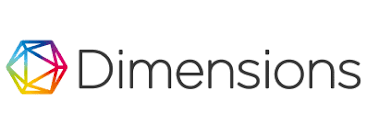Overview of Healthcare Workers' Preparedness in Disaster Management at Cut Meutia Regional General Hospital, North Aceh Regency
Keywords:
Disaster management, Health officers, PreparednessAbstract
Disaster management involves a series of activities, including prevention, risk mitigation, rescue, rehabilitation, and reconstruction, carried out before, during, and after a disaster occurs. The goal is to avoid or reduce the impact of disasters. In this context, the role of healthcare workers is crucial in disaster response. In Indonesia, there are regulations that mandate the responsibility of every healthcare worker in disaster management. To date, there has been no research or report describing the readiness of healthcare workers at RSUD Cut Meutia regarding disaster management. This study aims to provide an overview of the extent of healthcare workers' readiness in managing disasters at RSUD Cut Meutia in North Aceh Regency. This research is descriptive with a cross-sectional design, involving 285 respondents, and using Stratified Random Sampling technique. The research findings indicate that the majority of respondents have good knowledge of disaster management (52.3%), with a small percentage having a lack of understanding (2.1%). Most respondents show a positive attitude towards disaster management efforts (95.4%). Meanwhile, in terms of practices or previous experiences, the majority of respondents have adequate understanding (44.6%). The conclusion of this study is that the readiness of healthcare workers at RSUD Cut Meutia in North Aceh Regency in disaster management can generally be categorized as good.
References
1. Silitonga EM, Manurung J, Hidayat W. Kesiapsiagaan petugas kesehatan puskesmas dalam manajemen bencana di wilayah kerjapuskesmas silih nara kabupaten aceh tengah. 2022;6(April):188–203.
2. Supriyono P. Seri Pendidikan Pengurangan Risiko Bencana Tsunami. 2015;(2):2
3. Almukhlifi Y, Crowfoot G, Wilson A, Hutton A. Emergency healthcare workers’ preparedness for disaster management: An integrative review. J Clin Nurs. 2021;(August 2022).
4. BPBD. Kejadian Bencana Kota Lhokseumawe Tahun 2018-2022: Status Report 2022. BPBD. 2023:13-14.
5. Setiawan I. Penanggulangan Bencana Alam. Disaster Manag Cycle. J Ilm Kesehat Media Husada 2017;12(235):245.
6. Bruno L. Bencana. J Chem Inf Bruno, L ‘Bencana’, J Chem Inf Model 53(9), pp 1689– 1699Modeling. 2019;53(9):1689–99
7. Kementerian Kesehatan. Peraturan Menteri Kesehatan Republik Indonesia Nomor 75 Tahun 2019. Jakarta: Kementerian Kesehatan Republik Indonesia; 2019
8. Ahayalimudin N, Osman NNS. Disaster management: Emergency nursing and medical personnel’s knowledge, attitude and practices of the East Coast region hospitals of Malaysia. Australas Emerg Nurs J. 2016 Nov;19(4):203–9.
9. Tiara ET. Gambaran tingkat pengetahuan perawat terhadap penanggulangan bencana di provinsi lampung. J Ilm Kesehat. 2019;8(2):75–9.
10. Hesti N, Yetti H. Faktor-Faktor yang berhubungan dengan Kesiapsiagaan Bidan dalam Menghadapi Bencana Gempa dan Tsunami di Puskesmas Kota Padang. J Kesehat Andalas. 2019;8(2):338–45
11. Artini B, Mahayaty L, Prasetyo W, S FY, William S, Surabaya B, et al. Hubungan Tingkat Pengetahuan Kesiapsiagaan Bencana Pada Tenaga Kesehatan Dengan Sikap Kesiapsiagaan Bencana Budi. J Keperawatan. 2022;11(2):1–8.
12. Ahayalimudin N, Ismail A, Saiboon IM. Disaster management: a study on knowledge, attitude and practice of emergency nurse and community health nurse. BMC Public Health [Internet]. 2013;12(2):A3. Available from: https://doi.org/10.1186/1471-2458-12-S2-A3
13. Ramdani, Yanny T, Emaliyawati E. Kesiapsiagaan Perawat Rumah Sakit Dalam Menghadapi Bencana: Tinjauan Sistematis. J Keperawatan Komprehensif. 2020;6(2):101–11.
Downloads
Published
How to Cite
Issue
Section
License
Copyright (c) 2024 Maulina Debbyousha

This work is licensed under a Creative Commons Attribution-ShareAlike 4.0 International License.
n order for Proceedings of Malikussaleh International Conference on Health and Disaster Medicine (MICOHEDMED) to publish and disseminate research articles, we need non-exclusive publishing rights (transfered from author(s) to publisher). This is determined by a publishing agreement between the Author(s) and Proceedings of Malikussaleh International Conference on Health and Disaster Medicine (MICOHEDMED). This agreement deals with the transfer or license of the copyright of publishing to Proceedings of Malikussaleh International Conference on Health and Disaster Medicine (MICOHEDMED), while Authors still retain significant rights to use and share their own published articles. Proceedings of Malikussaleh International Conference on Health and Disaster Medicine (MICOHEDMED) supports the need for authors to share, disseminate and maximize the impact of their research and these rights, in any databases.
As a proceeding Author, you have rights for a large range of uses of your article, including use by your employing institute or company. These Author rights can be exercised without the need to obtain specific permission. Authors publishing in Proceedings of Malikussaleh International Conference on Health and Disaster Medicine (MICOHEDMED) proceedings have wide rights to use their works for teaching and scholarly purposes without needing to seek permission, including:
- use for classroom teaching by Author or Author's institution and presentation at a meeting or conference and distributing copies to attendees;
- use for internal training by author's company;
- distribution to colleagues for their reseearch use;
- use in a subsequent compilation of the author's works;
- inclusion in a thesis or dissertation;
- reuse of portions or extracts from the article in other works (with full acknowledgement of final article);
- preparation of derivative works (other than commercial purposes) (with full acknowledgement of final article);
- voluntary posting on open web sites operated by author or author’s institution for scholarly purposes,
(but it should follow the open access license of Creative Common CC-by-SA License).
Authors/Readers/Third Parties can read, print and download, redistribute or republish the article (e.g. display in a repository), translate the article, download for text and data mining purposes, reuse portions or extracts from the article in other works, sell or re-use for commercial purposes, remix, transform, or build upon the material, they must distribute their contributions under the same license as the original Creative Commons Attribution-ShareAlike (CC BY-SA).




